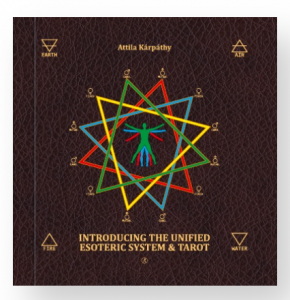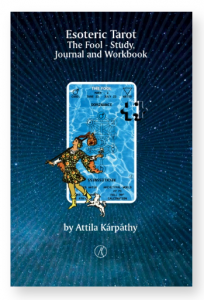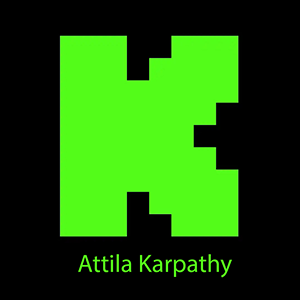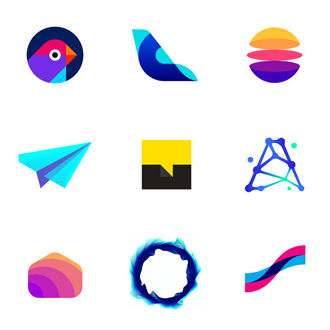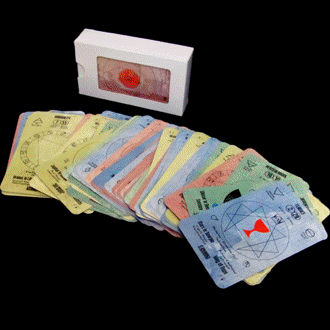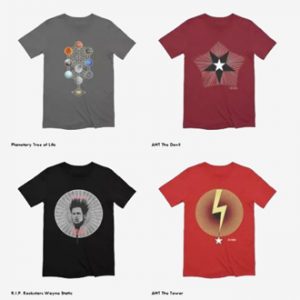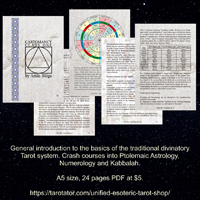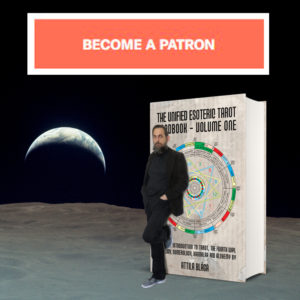The Tarot of Stars Eternal is a reworking of the Aleister Crowley Thoth Tarot by Dante Tarot artist Andrea Serio. The majors are very similar to Crowley’s Thoth, but the minors have been expanded and have an emphasis on Decans. Read more Liber T Tarot deck or Tarot of Stars Eternal
Monthly Archives: November 2015
The Hermetic Tarot deck
The Hermetic Tarot is black and white only, but is very highly detailed Tarot deck of 78 cards. It is an artistic recreation of a mysterious, esoteric Tarot deck by Mathers, a member of the Order of the Golden Dawn. Now reprinted and again available. Read more The Hermetic Tarot deck
Initiatory Tarot of the Golden Dawn
The Initiatory Tarot of the Golden Dawn has been created from documents from the occult group. The deck artist was without any knowledge of their previous decks, so the result is comic-book style illustrations with familiar elements in new interpretations. Read more Initiatory Tarot of the Golden Dawn
The Golden Dawn Magicial Tarot deck
The Hermetic Order of the Golden Dawn (Latin: Ordo Hermeticus Aurorae Aureae; or, more commonly, The Golden Dawn (Aurora Aureae)) was an organization devoted to the study and practice of the occult, metaphysics, and paranormal activities during the late 19th and early 20th centuries. Known as a magical order, the Hermetic Order of the Golden Dawn was active in Great Britain and focused its practices on theurgy and spiritual development. Many present-day concepts of ritual and magic that are at the centre of contemporary traditions, such as Wicca and Thelema, were inspired by the Golden Dawn, which became one of the largest single influences on 20th-century Western occultism. Read more The Golden Dawn Magicial Tarot deck
The Golden Dawn Tarot deck
The Order of the Golden Dawn was an active occult society in Europe around ninety years ago which attracted some brilliant people. Their tarot deck was illustrated by Wang under instruction from Regardie, and is a work of esoteric importance rather than aesthetic interest.
The Golden Dawn Tarot is an esoteric deck, based on the systems used by the Hermetic Order of the Golden Dawn. Wang worked under the direction of Israel Regardie, with card interpretations based on those developed by S. L. MacGregor Mathers. Read more The Golden Dawn Tarot deck
The Golden Tarot deck by Kat Black
“I started this site in particular to widen the audience for artwork of an under-rated and little-known period. I love late medieval artwork, and I think a lot of other people will too if they just get to see it. Most of these paintings are in European churches, and very few of us will see them in real life. The pictures have been manipulated in order to make them suitable for this tarot deck, but they are based on the real thing.
Most of the images used are from 1300 – 1500AD, a fascinating period both in history and art. The extensive use of gold leaf at this time, as well as experimentation with perspective and use of light and shadow make for some very beautiful pictures. You can see the first beginnings of the Renaissance – striving for reality rather than the stylised representations typical of the earlier medieval period. Read more The Golden Tarot deck by Kat Black
The Dark Grimoire Tarot deck
The Dark Grimoire Tarot takes its inspiration from magical texts of fiction and legend – the Necronomicon and other grimoires. The 78 cards have non-traditional scenes of horror and nightmare. Often strange, they’re also sometimes disturbing, particularly in the literal Hanged Man. Read more The Dark Grimoire Tarot deck
The Giotto Tarot deck by Guido Zibordi Marches
The Giotto Tarot draws its inspiration from Giotto de Bondone, an Italian painter who lived from 1267 to 1337. Giotto is known for moving art in his time away from a stiff formalism based on traditional forms. He encourged the observation of nature and brought a spirit of humanism to his works. The figures in his paintings display an emotional range unusual for the period. The Giotto Tarot is the work of Italian painter Guido Zibordi Marchesi, an expert in Medieval Art. Marchesi recreates Giotto’s style within the context of the tarot. Read more The Giotto Tarot deck by Guido Zibordi Marches
The Enochian Tarot deck
The Enochian Tarot deck is based on the Enochian magickal system, a form of ceremonial magick. The deck has 30 major arcana cards instead of the usual 22.
Enochian is a name often applied to an occult or angelic language recorded in the private journals of John Dee and his colleague Edward Kelley in late 16th-century England. Kelley was a spirit medium who worked with Dee in his magical investigations. The men claimed that the language was revealed to them by the Enochian angels. The language is integral to the practice of Enochian magic.
The language found in Dee and Kelley’s journals encompasses a limited textual corpus, only some of it with English translations. Several linguists, notably Donald Laycock, have studied Enochian, and argue against any extraordinary features in the language. Read more The Enochian Tarot deck
The Estensi Tarot deck
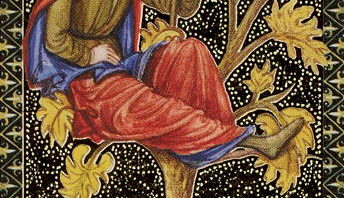
The Golden Tarot of the Renaissance is based on the fifteenth-century French deck, the Charles VI (also known as the Estensi) of which only 17 cards remain. Lo Scarabeo’s full set of 78 cards have been created in attractive watercolours and finished with a gold leaf background. Read more The Estensi Tarot deck

